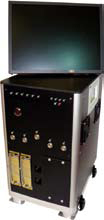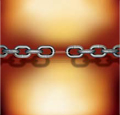
Mr. Julien LOSSEAU, COO of Dimac Systems s.a.r.l. in an exclusive tete a tete with Coordinates magazine during ISPRS Congress in Beijing
According to him, DIMAC Systems truly believes that behind its mission and desire to offer a new product lies something even more significant: the will to provide a new approach …

The Galileo E5 signal employs a complex sub-carrier modulation known as AltBOC(15,10) modulation. The sub-carriers are specially chosen waveforms that result in a split spectrum and a constant envelope after the modulation. Four codes are combined with these specially chosen complex sub-carriers to obtain the modulating signal which then phase modulates the E5 carrier. Alternatively, the complete modulation can be…

Ten years ago the California Board for Professional Engineers and Land Surveyors (BPELS) attempted to pass a set of rules that required all digital mapping to be performed by Professional Land Surveyors. The motivation for these rules stemmed from the definition of surveying under the California Professional Land Surveyors’ Act, which includes specific reference to digital mapping being within the purview of the Professional Land Surveyor…
August 2008
ESRI’s 28th annual International User Conference
August 4-8, 2008 in San Diego, California
http://www.esri.com
3rd Indonesian Geo-Information …

Europe looks for intellectual GNSS expertise
S With a public funds set aside for Galileo and EGNOS and related projects being put out to bid, Europe is also looking for intellectual GNSS expertise to help it get Galileo in orbit.
The European Commission’s director general for energy and transport is advertising for a “contractor that has extensive experience with the project management of large projects, in particular public sector procurements, and knowledgeable in a range of domains, that will assist the Commission in making strategic decisions, in taking the right programmatic approaches, in analyzing and reviewing the state of the programs at various milestones, and in putting forward recommendations. That’s according to the “invitation to tender” issued by Fotis Karamitsos, head of the European Commission (EC) Directorate-General for Energy and Transport, on June 25.
This call for outside expertise arose from the moves the European Union made in late 2007 to rescue the Galileo program in the wake of the collapse of its public/ private partnership funding mechanism. As part of that decision to make Galileo an entirely public project, it created the European GNSS Programmes Committee to assist the European Commission in administering the Galileo and EGNOS programs. The full invitation to tender document can be downloaded at the European Commission Directorate- General for Energy and Transport website.

The XXI ISPRS Congress, 3-11 July 2008 Beijing, China
The opening ceremony of XXI ISPRS (Society for Photogrammetry and Remote Sensing) Congress was chaired by Prof Yang Kai, President of Chinese Society of Geodesy, Photogrammetry and Cartography. Mr Lu Xinse, Vice Minister of Land Resources of China, Director General …

IIT Kanpur proposes micro satellite to ISRO
IIT Kanpur has submitted a proposal to the Indian Space Research Organisation, relating to design and development of a micro satellite. It shall weigh around 7 kgs, can be used as part of disaster management and in cartography. The project was expected to require a funding of around Rs 5-7 crore. www.business-standard.com

In-Stat expects Chinese GPS handset market to grow rapidly
According to In-Stat, “the Chinese GPS phone market is still small and has low penetration, but its high growth rate is a clear signal of its development, as is the fact that it is starting to have an impact on the growth of the PND market”. The findings of this report shows shipments of GPS phones will exceed 5 million in 2009 and will account for about 10% of total mobile phone shipments in 2012, compared to 0.6% in 2007. In 2008, more mainstream handset manufacturers have begun GPS phone production, and the number of models available will be at least three times that of those in 2007.

Introducing GIS for IP based network alert notification
Desktop Alert Inc. a premier provider of network centric emergency mass notification systems to the US government pronounced that it has completed its GIS for implementation with the Desktop Alert Mass Notification System being the first such implementation worldwide. It employs industry standards for GIS mapping systems. The new product has been built on using AJAX technologies along with detailed street and aerial imagery data, and an open API. It allows customization of the map output along with the ability to add situational awareness and response capabilities using application-specific data to the map. www.desktopalert.net

The present study aims at developing a generic automated methodology for addressing Multi-Objective Multi- Criteria Decision-Making problems. Scientific approach which make use of analytical modeling techniques are essential to suggest suitable changes in land use and to generate action plan for an area for land and water resource development. This problem can be cast into a multi-objective multicriteria decision-making problem…










 (5.00 out of 5)
(5.00 out of 5)